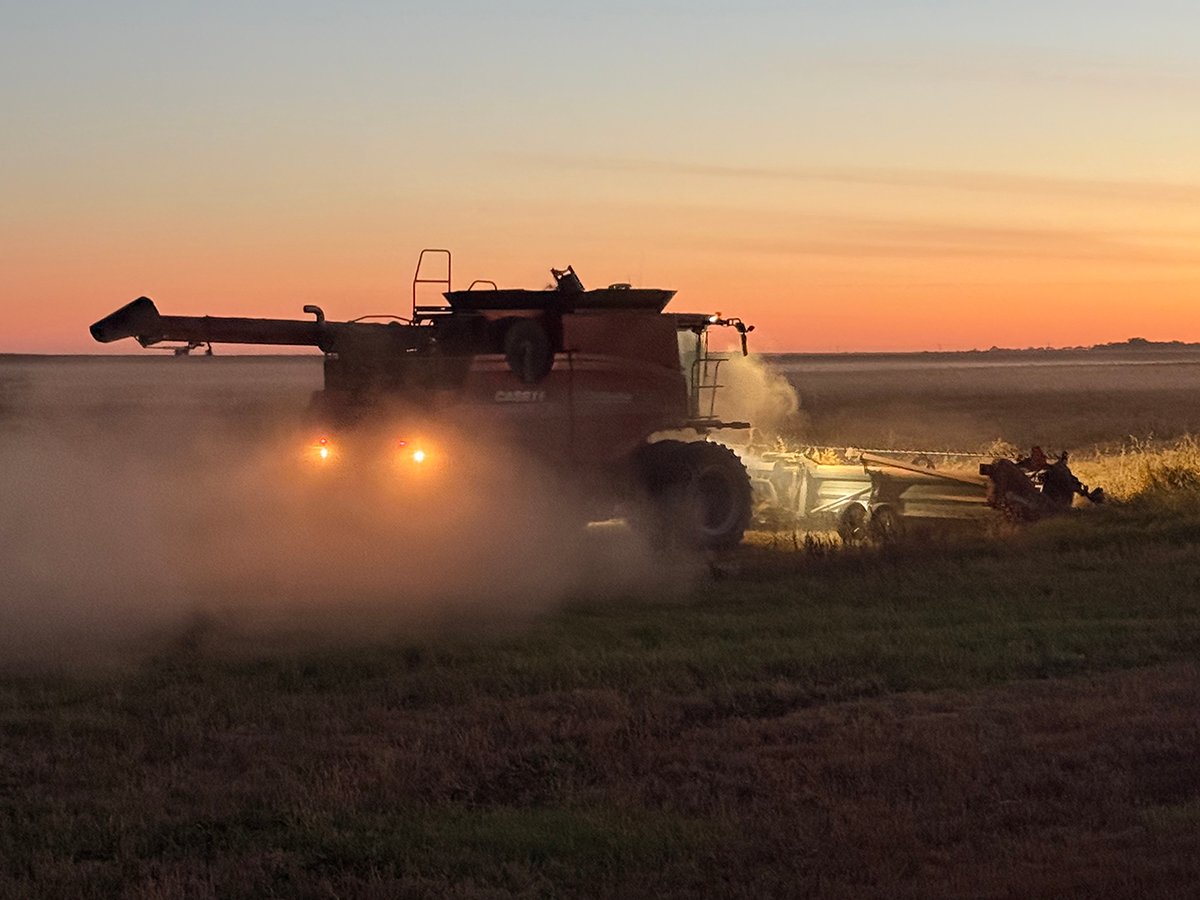Mycorrhizae are fungi that live only in union with plants. Fungus and plant benefit from these relationships, with the plant providing sugar to the fungus and the fungus providing a variety of services to the plant.
One of these services is to help plants supplement their nutrient needs, which is an exciting prospect for organic and low-input farmers, considering that lack of nutrients often limit plant growth in natural systems.
Researchers suggest that about 80 percent of plants and as many as 170 species of fungus may be involved in mycorrhizal associations.
Read Also

Downturn in grain farm economics threatens to be long term
We might look back at this fall as the turning point in grain farm economics — the point where making money became really difficult.
Legumes are especially prone to mycorrhizal association. Cereals generally are mycorrhizal, though different varieties have different levels of association. Some crops, such as canola, are non-mycorrhizal. These crops can severely reduce mycorrhizae populations and delay their development in crops that follow the non-mycorrhizal crops in rotation.
Many common agricultural practices, such as tillage and chemical fertilizer application, may substantially reduce the number and type of mycorrhizal associations. These practices can change the communities of fungi, further reducing the benefits of mycorrhizal associations. Mycorrhizae are especially limited in high phosphorus soil.
Phosphorus levels are often reduced in organically managed soil, resulting in greater mycorrhizae effects, especially where efforts are made to reduce tillage. A higher dependence on legumes for nitrogen and the use of cover crops to build organic matter in organic systems also benefit mycorrhizae.
In a study of organic and conventional systems, more crop roots were associated with mycorrhizae in the organic plots. Organically managed soil was able to initiate mycorrhizal associations more readily, with much of the difference related to the level of soluble phosphorus in the soil.
Research into mycorrhizae benefits on the Prairies is limited, but evidence from other species and regions suggests exciting potential.
The mycorrhizal fungus grows as a vast web of tiny filaments in plant roots and the surrounding soil. The fungal threads, called mycelia, explore a much larger area than do the plant roots. When the mycorrhizae encounter limited resources, such as water, phosphorus or micronutrients, they can pass them on to their associated plant. Mycorrhizae can increase plants’ access to phosphorus, ammonium, potassium, calcium, iron, copper, manganese, zinc and nickel.
Mycorrhizae can also help with drought resistance and heat tolerance. This is partly the result of mycorrhizae-induced hormonal changes in plants, which allow them to maintain a better water balance under drought conditions.
Some mycorrhizae also produce a sticky substance that cements small soil particles into stable aggregates. This substance holds water, which is a direct benefit in parched soil, and reduces water erosion. Soil is also able to store more carbon when mycorrhizae are active.
Mycorrhizal associations may change a plant’s relationships with its community. Other microbes in the soil may be more beneficial to plants with mycorrhizal associations. Mycorrhizae can increase the ability of nitrogen-fixing bacteria to promote growth in legumes.
This also works with growth-promoting bacteria in other plants. Mycorrhizae may reduce infection by bacteria and fungi that cause plant diseases and there is evidence that mycorrhizal associations help some tree species resist insect attacks. Other trees are able to gain nitrogen from mycorrhizae that infect soil insects.
Plant-to-plant relationships can also be altered. Mycorrhizae can act as a bridge between two plants that allows phosphorus to move from a donor plant through mycorrhizae to a receiver plant. As well, relationships can change between weeds and crops.
Mycorrhizae can inhibit non-mycorrhizal plants such as lamb’s-quarters, pigweed, wild mustard and wild buckwheat. They may also inhibit the growth of non-mycorrhizal crops such as mustard, canola, quinoa, buckwheat and amaranth.
One researcher claimed that mycorrhizae can change the “functioning of weed communities so that the net effect of weeds becomes more beneficial.”
This may happen if weeds promote the growth of mycorrhizae that later colonize the crop, which could be why some crops grow better following some weed communities.
There are many challenges in working with mycorrhizae. Research is limited in part because the fungi are difficult to identify and culture.
As well, we do not understand the full balance of benefits and risks.
“When you are dealing with soil, it really is a big black box,” one researcher said.
“It is so difficult to figure out what is going on down there.”
Nevertheless, it seems research in this area has great potential.
Frick is the prairie co-ordinator for the Organic Apriculture Centre of Canada at the University of Saskatchewan. She can be reached at 306-966-4975, at brenda.frick@usask.ca, or www.organicagcentre.ca.The opinions expressed in this column are not necessarily those of The Western Producer.
Chemical handler
The Anabranch Liquid Handling System is designed to improve chemical handling safety and minimize glugging and splashing.
The system works like a giant syringe, creating a vacuum that draws liquid from the chemical container through a coupling system into a four-litre measuring chamber. The chemical is securely contained in the enclosed chamber, allowing it to be easily and safely moved to the spray tank or induction bowl.
In May, the system won the Society of Plastics Engineers 2004 Industrial Plastics Product Design Award. Entries were judged on integrity and innovation of design, positive impact on the environment, manufacturability, value to the product marketplace and plastics industry and overall appearance.
Initial target markets for the product are users of farm and turf care chemicals and pest control professionals, who manually pour from small containers into measuring jugs or spray tanks. For information, visit www.anabranch.com or call 617-3821-2283.
Solar waterer
SPI Industries has added the 354NG Energy Free Waterer to its product line. The waterer is made of durable moulded polyethylene and features a patented door closure system and one-piece lid that prevents contamination and protects against mosquito breeding. The unit has a built-in overflow valve, a large drain plug and quick release D-clips for easy access to the watering mechanism.
The unit is corrosion free and is constructed with water seal and foam rubber gaskets. For information, write to SPI Industries Inc., Box 10, RR #2, Shallow Lake, Ont., N0H 2K0, phone 519-935-2211 or visit www.spiplastics.com.
















